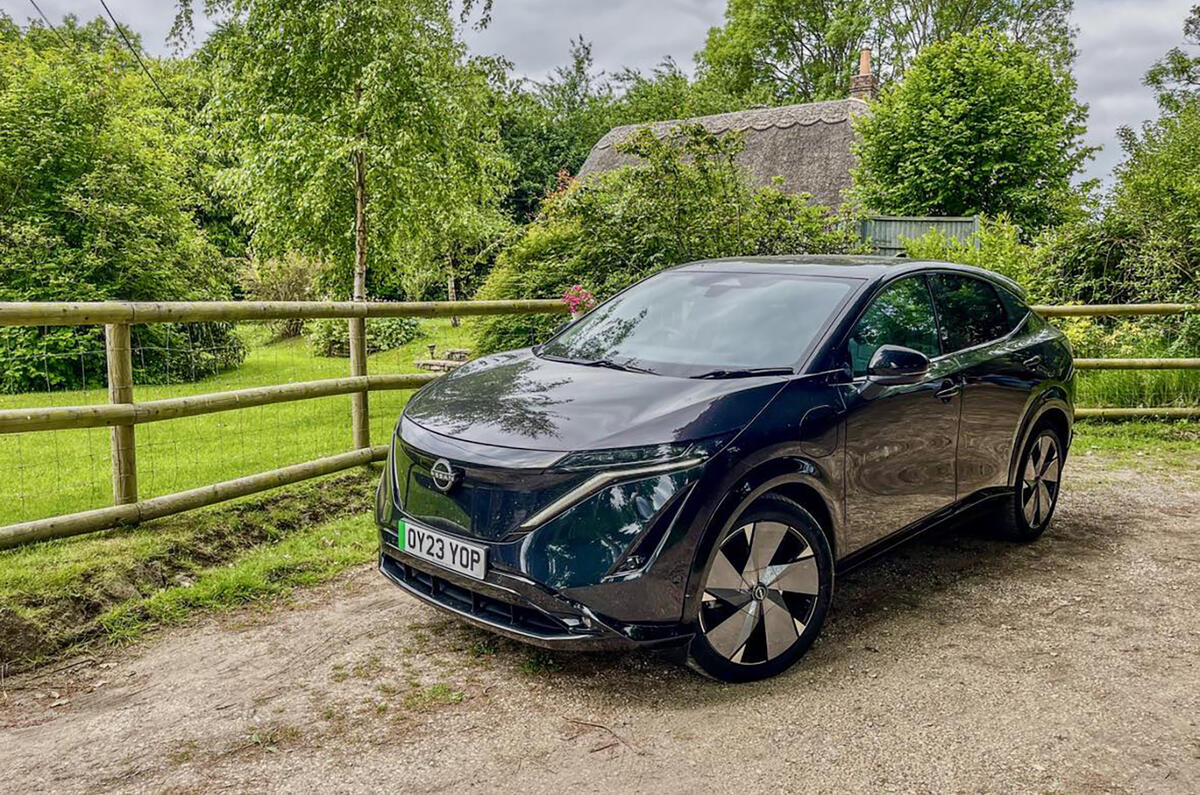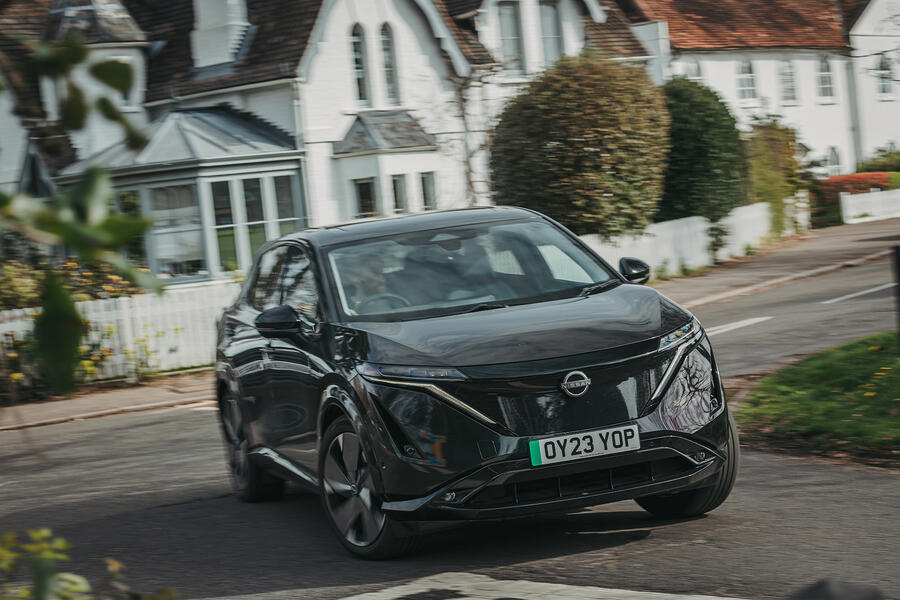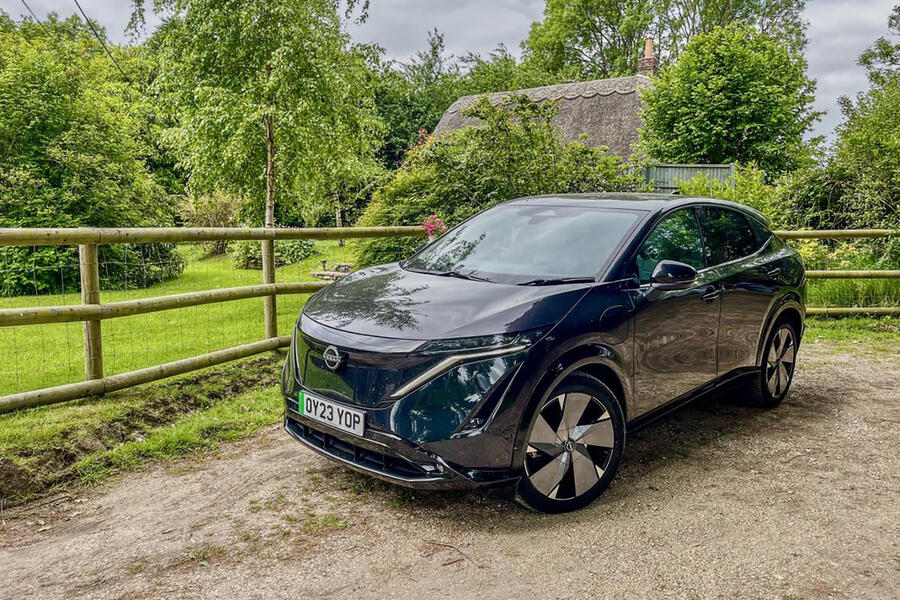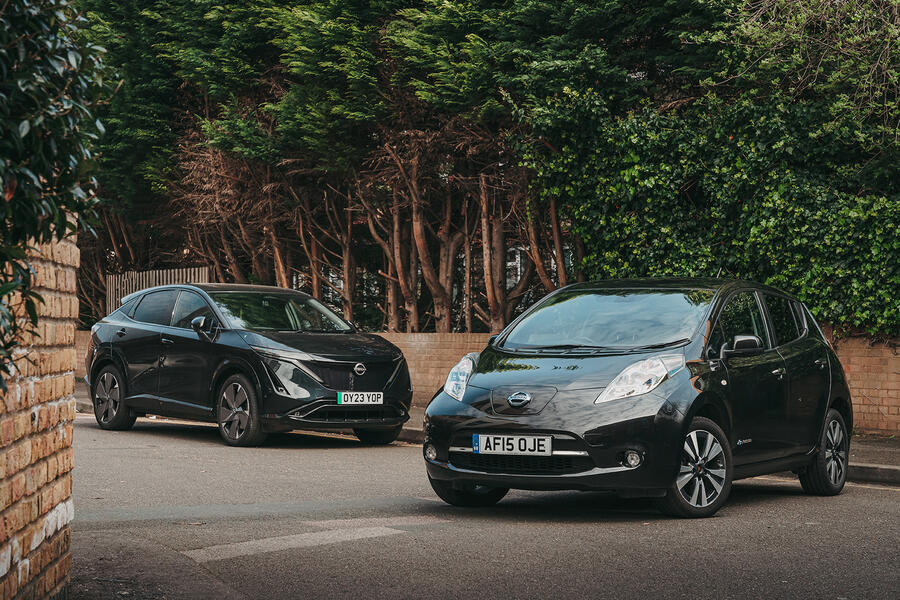Welcome to the long-term squad, Nissan Ariya. Well, Ariya the second. I’ve recently swapped from an Ariya Advance, which is near the bottom of the spec league table, with a 63kWh battery and front-wheel drive, to the almost top-spec Evolve, with an 87kWh battery and four-wheel drive.
I won’t go into the tedium of specific spec level differences (although if you are that way inclined, there's always the online configurator), but I will cut to the chase with the thinking behind it.
Broadly we’re running two Ariyas back to back in order to determine the progression from Nissan’s first electric car, the Leaf hatchback, to its second, the Ariya crossover. But the reason I'll be running to his Evolve-spec car for a few months is to find out whether it ’s really worth £10,000 more than the Advance.
Early indications are good for Nissan. The 63kWh-battery models don’t charge at 22kW – which was annoying, because my local chargers are 22kW units. The upshot of that is I was paying for 22kW but only receiving 7kW speeds.
The 87kWh battery models, however, can, so they're faster and better value – in my mind, anyway. The battery too is larger, so I can travel farther on a full charge.
The old car’s claimed WLTP range was 250 miles, although in my hands, with a fair chunk of motorway driving, it was more like 200 miles; the new car ’s WLTP range is 329 miles.
That's a big difference, and I’m looking forward to seeing quite how far I manage. I described the old car as the ‘ginger spaceship’; this new one looks quite black in the photos, but actually its colour is officially called Aurora Green.
The name comes from the aurora borealis, known to most people as the Northern Lights. But there’s no getting around it: it’s blue. Blue Nappa leather adorns the seats, while the centre console and door cards are wrapped in blue suede. I think it looks magnificent.
I’ve spent a bit of time in quite dour German cars lately, and getting back into the Ariya has been a delight. Intriguingly, the Nissan doesn’t feel particularly less well screwed together than those Germans either.
It’s basically a multi-tonal finish, a bit like a toned-down and more sophisticated version of TVR’s Cascade Violet, except in green. Well, I say green, but it can appear purple or brown, depending on the angle from which you look at it and the light, much to the chagrin of our photographer, who described it as ‘aubergine’ in colour. I must think of a nickname for the car. Perhaps just ‘the aubergine’ will do.






















Join the debate
Add your comment
If you want to find out how far an EV can go till it runs out go on car wo w u tube.